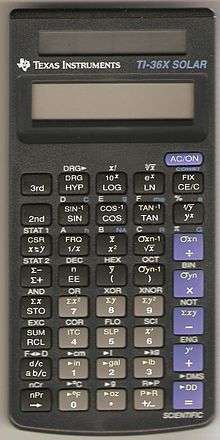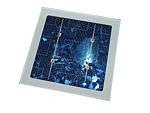Solar-powered calculator
.jpg)
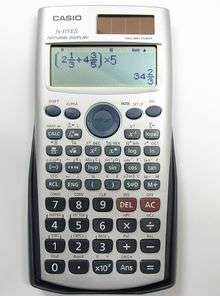
Solar-powered calculators are hand-held electronic calculators powered by solar cells mounted on the device.[1] They were introduced at the end of the 1970s.[2]
Amorphous silicon has been used as a photovoltaic solar cell material for devices which require very little power, such as pocket calculators, because their lower performance compared to conventional crystalline silicon solar cells is more than offset by their simplified and lower cost of deposition onto a substrate. The first solar powered calculators were already available in the late 1970s, such as the Royal Solar 1, the Sharp EL-8026, and the Teal Photon.
Solar calculators utilize liquid crystal displays as they are power efficient and capable of operating in the low voltage range of 1.5–2 V. Features on other models includes a light pipe used to converge light onto the solar cells to power the calculator.[3] However, solar calculators may not work well in indoor conditions under ambient lighting as sufficient lighting is not available.[4][5][6]
Anylite Technology is the name of a solar technology used in some calculators made by Texas Instruments. They are intended to be able to function with less light than other solar calculators. This was essentially achieved by using a relatively large photovoltaic solar cells. Anylite Technology originated in the 1980s and the term is still used today.[7] Note how Anylite is very similar to the words any light, which is how it is intended to be pronounced. The use of Anylite technology in a calculator is denoted by a lower case "a" at the end of the model number (TI-30a). In older models, such as the TI-36 Solar (shown right), Anylite Solar is written in all capital letters on the calculator.[8]
Gallery
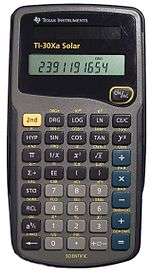
References
- ↑ "Solar on cheap" (PDF). physics.ucsc.edu. Retrieved 2011-06-30.
- ↑ "Electronic Pocket Calculators-The Road to Electronic Pocket Calculators: History of Invention". umw.edu. Retrieved 2011-06-30.
- ↑ "Recent LCD Calculators". mathcs.albion.edu. Retrieved 2011-06-30.
- ↑ "Topics in Self-Powered Controllers - Special Emphasis on Push Buttons and Switches for Industrial Applications". mathcs.albion.edu. Retrieved 2011-06-30.
- ↑ "Choosing A Calculator". files.chem.vt.edu. Retrieved 2011-06-30.
- ↑ "The Solar Power Battery Chargers". solarpowerwindenergy.org. Retrieved 2011-06-30.
- ↑ https://education.ti.com/en/us/products/calculators/elementary-calculators/ti-108/tabs/overview
- ↑ http://www.datamath.org/Sci/Modern/TI-36SOLAR.htm


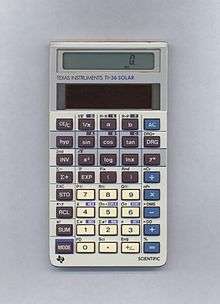

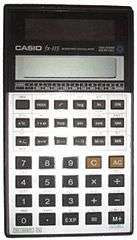
.jpg)


